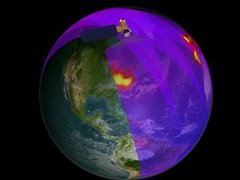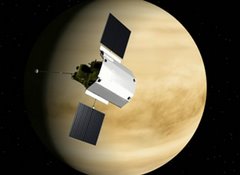
The NASA MESSENGER spacecraft performed its first flyby of Mercury on January 14, 2008. In addition to mapping the entire surface of the planet, one of its goals is to shed new light on the existence of ice in the polar regions of this hot planet. Ice on Mercury? It's not as strange as it seems! Click here to learn more and to access a pdf that provides a series of space math questions (and an answer key) related to this topic. For more classroom activities related to ice in on Mercury and elsewhere in our solar system click here. For more space math problems visit http://spacemath.gsfc.nasa.gov. A new space math problem is added every week!





